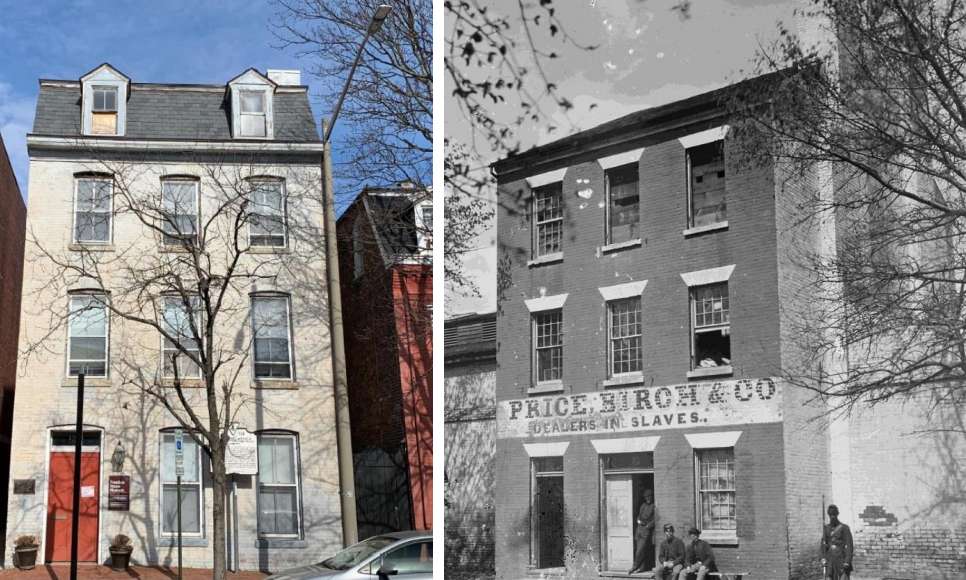
While the Office of Historic Alexandria (OHA) is going into excruciating detail to restore the Freedom House museum‘s exterior to its pre-Civil War appearance, city leaders are unsure if a sign advertising the sale of slaves might take that too far.
Today, the Freedom House Museum is a city-owned museum dedicated to telling the stories of the Black men, women and children trafficked through the building between 1828 and 1861.
In a meeting at the Board of Architectural Review (BAR) yesterday (Wednesday), Gretchen Bulova, director of the OHA, and City Architect Al Cox discussed the extensive research and work going into making the exterior of the building look as it did at its period of cultural significance: when it was the headquarters of the largest slave-trading operation in the United States.
“This is a little bit different than the board normally sees,” Cox said. “National practice says elements that have been on a building for more than 50 years begin to achieve historic importance in their own right. In this case, rather than the architecture being what’s most important, it’s of cultural significance to the city and the country.”
Cox said there are other examples, notably at James Madison’s Montpelier and Thomas Jefferson’s Poplar Forest, where later additions were removed to restore the original home to its era of historic relevance.
OHA plans include things like bricking up windows added later and removing siding from the building. However, one item of historical accuracy might not be appropriate for the building: a sign that says “Price, Birch & Co, Dealers in Slaves.”
The BAR supported OHA’s plans to the building but said they were less certain about the sign. The sign text would be determined in a separate Certificate of Appropriateness application process.
“I’ve been looking at the pictures of the sign that was there,” said BAR member Andrew Scott. “I’m not asking for it but, if you could paint a mural of the faces of some of the enslaved people rather than repainting the names of the owners of the building, it might be more appropriate and better signal what this building is about.”
Bulova said the OHA also hasn’t been able to find images of the sign from when it was the Franklin and Armfield Office.
“We completely agree,” said Bulova. “We need to do more research.”
BAR Chair James Spencer said the sign gave him pause, but like the rest of the BAR, he supported the extensive work the OHA was doing to restore the building.
“I flipped through the photos a bunch of times and said ‘This is really good stuff,'” Spencer said. “The sign part freaked me out a little bit but you guys have clarified that, because I think we need to have a broader community discussion about the sign.”

